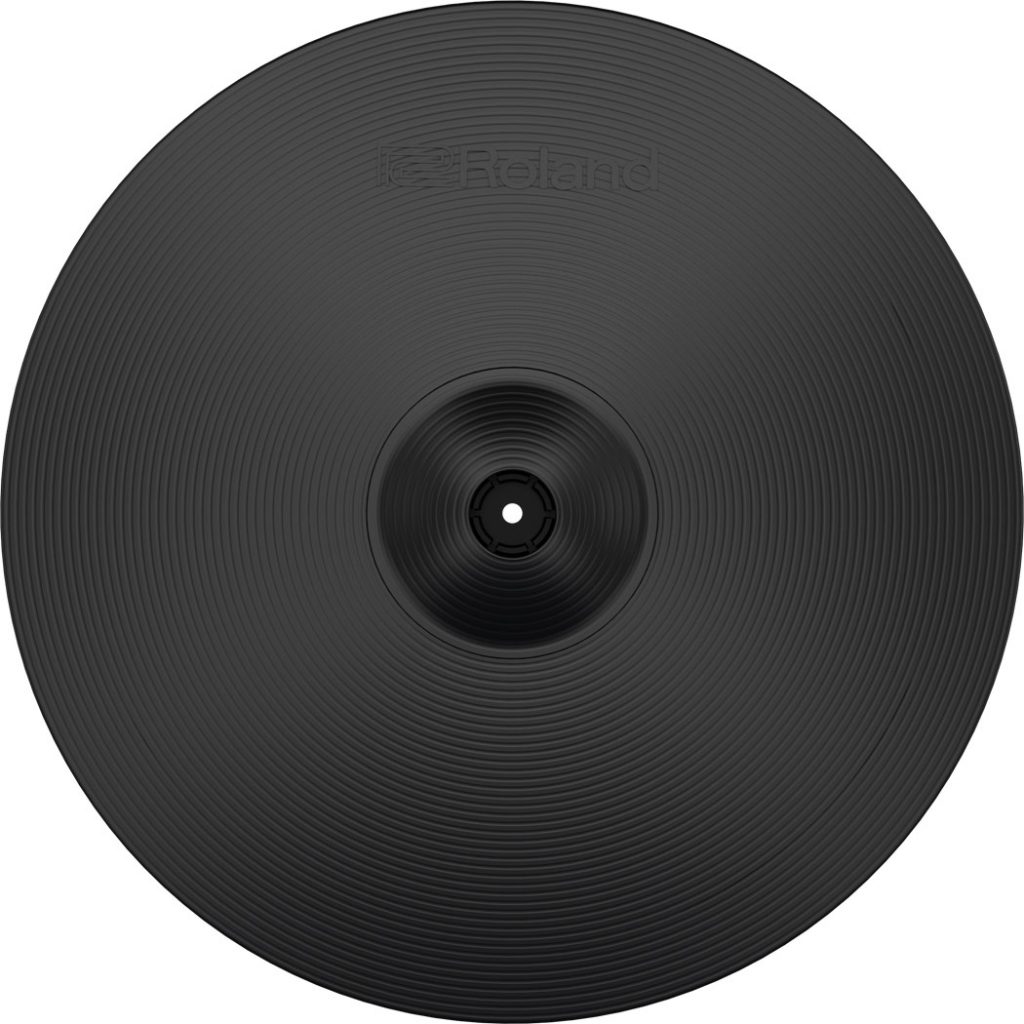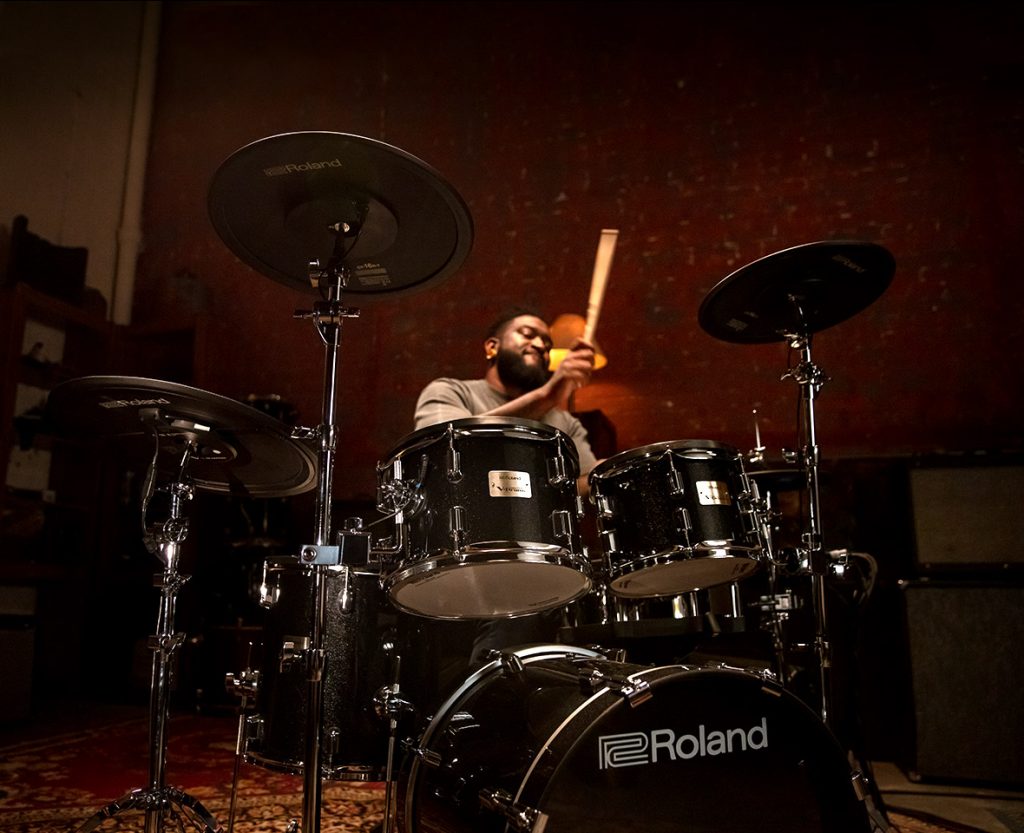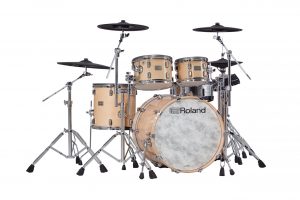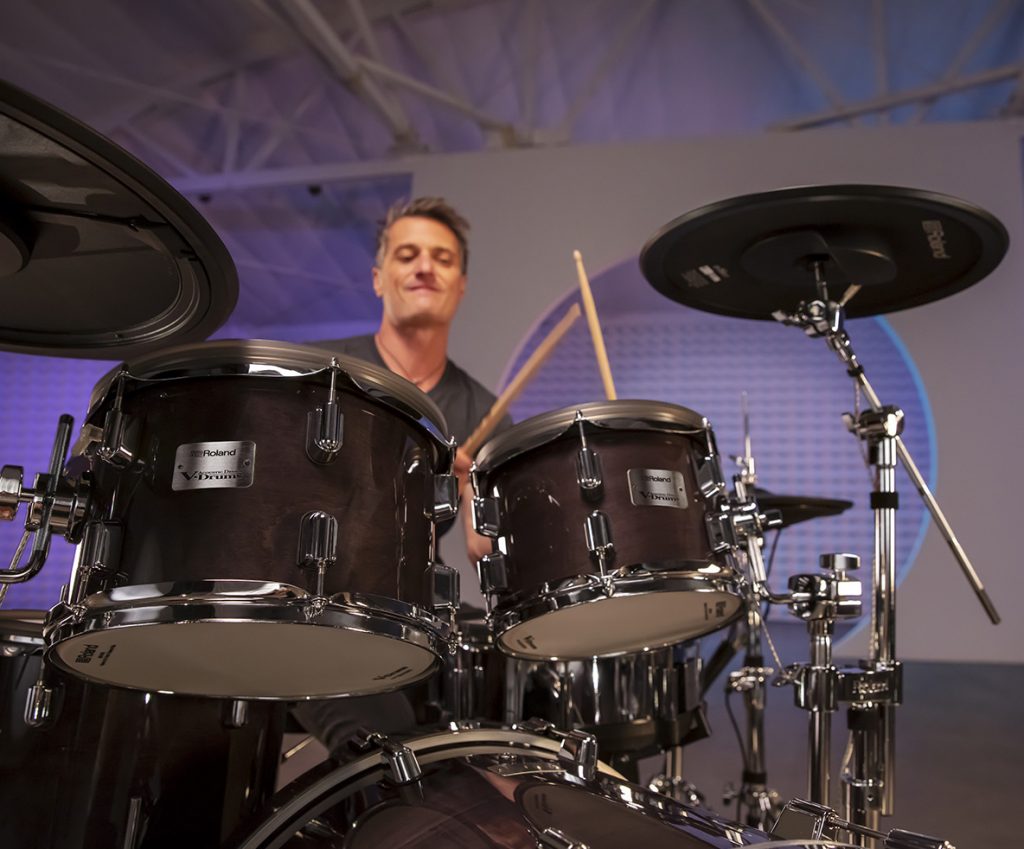In this article, we will explore techniques for managing the volume of a drum kit during worship drumming without sacrificing any aspects of the performance.
The Ten Benefits Of Using V-Drums for Worship
-
Controllable Volume Level
-
Familiar Acoustic Drum Kit Look
-
Normal Acoustic Playing Techniques Possible
-
V-Drums are Easy To Amplify & Record
-
Backing Tracks and Click Available Directly In The Module
-
Silent Rehearsal & Stage Sound-checking Possible
-
Rubber Rims and Cymbals Mean No More Stick Breakages
-
Settings Can Be Easily Saved and Recalled for Reliable Sound
-
Use Your Own or Your Favourite Artist’s Drum Samples
-
Simple Plug and Play Expansion
One of the greatest obstacles for a worship drummer is to play with intensity while keeping the volume at a reasonable level, and creating a drum set that complements the worship environment. Playing in challenging settings such as churches or halls can be a nuisance for both the audience and the band.
Drummers realize early on that striking the drums with conviction brings them to life. However, this approach may clash with the requirements of a band performing in a large, live setting. By hitting the drums with enough force, they vibrate adequately and create soundwaves that energize the space, resulting in a grand and remarkable sound.
Read this first hand story of one church’s switch to electronic drums here
It is typically impossible for drummers to gauge whether their drums are too loud for the audience due to the inherent loudness of the instrument. Consequently, determining the appropriate volume level for the singers, spoken voice, and band typically involves a painful trial-and-error process.
Fortunately, electronic drums can effectively solve the issue of drum volume in the worship setting by enabling drummers to play with their preferred intensity and then adjust the volume level accordingly. Additionally, the relief of not needing to play behind a cumbersome plastic screen to regulate the sound makes V-Drums an excellent option for worship drumming.
However, selecting between electronic and acoustic drums is not a straightforward decision, and worship drummers often hesitate to use electronic drums due to the following reasons:
-
1st Argument: Electronic Drums Don’t Look Like Acoustic Drums
-
2nd Argument: They Don’t Feel Like Acoustic Drums
-
3rd Argument: They Don’t Sound Like Acoustic Drums
1st Argument: Electronic Drums Don’t Look Like Acoustic Drums?
Is it really true? Nowadays, even seasoned professionals and the general public find it almost impossible to differentiate between an acoustic drum kit and an electronic one in a live setting.
The VAD-706 Acoustic Design kit is a perfect example, as it features a full-sized KD-222 22″ kick drum and a 14″ snare, just like a conventional acoustic kit. The maple wood toms are 10″, 12″, and 14″ floor tom designed to look and sound great, with construction techniques that provide the best triggering compared to standard acoustic drum shells.
The 14″ VH-14D hi-hat comprises two hats, similar to an acoustic hi-hat, and is skin touch-sensitive, mute, and even left and right hand aware for the most authentic playing experience. The 18″ CY-18DR ride cymbal also swings and feels like the best buttery ride cymbal, with the appearance and playing feel of an acoustic ride.
The latest 16″ CY-16RT thinline crash cymbals are 40% lighter than previous trigger cymbals, making them almost silent while offering the feel and response of acoustic cymbals.
2nd Argument: Electronic Drums Don’t Feel Like Acoustic Drums?
Since the days of the wrist-shattering, hexagonal-shaped riot shields of the 80s, electronic drums have come a long way.
Roland has been at the forefront of this innovation See the journey here
Roland V-Drums boast multi-ply, adjustable tension mesh drum heads that offer a natural feel without excessive bounce. The unique trigger technology built into them adjusts to the player, and they are quiet enough to play at home all day long.
The thickness of the mesh head is chosen based on the drum, with a 3-ply standard on the PD-140DS snare and PDA-140F-MS floor tom. Thicker heads provide less bounce and even lower volume.
These advanced technologies are the result of decades of R&D and exhaustive testing, as well as close working relationships with some of the world’s best players, including Billy Cobham, Peter Erskine, Omar Hakim, Ian Paice, Gregg Bissonette, Jim Keltner, Chris Whitten, Malcolm Green, Johnny Rabb, Thomas Lang, Michael Schack, Craig Blundell, Chad Wackerman, Kai Hahto and countless other pros.
All of this hard work results in an incredible playing experience, leaving nothing to be desired. See how the CY-18DR compares to an acoustic ride in this video…
CY-18DR: The Real Deal Ride


Equipped with its own CPU and electro-static sensor system, the 18″ CY-18DR is powered and can be connected to the TD-50 or TD-27 module via USB. This innovative sensor system enables the module to analyze various aspects of playing, including stick position, hitting strength, interval between notes, and skin contact.
The cymbal’s weight and profile are meticulously designed to provide a natural swing and a buttery feel that emulates the beloved classic ride cymbal.
Expressive Full-sized Snare Drum
A responsive and satisfying snare drum is an essential component of any drum kit. The PD-140DS snare is a 14-inch steel drum with a three-ply mesh head and a unique trigger sensor system. The drum also features a shell wrap system that allows the shell color to be changed quickly and easily, without glue. This system is also available on the PD-108 and 128 series V-Drums toms.
Similar to the CY-18DR ride, the Roland digital snare utilizes an electrostatic sensor system to provide a seamless playing experience. The USB-powered drum is even able to sense when a hand is resting on it and automatically communicate this to the sound module, allowing for instant cross-stick playing without any need to press buttons.
To see how the PD-140DS stacks up against an acoustic snare, check out this video…
Great Feeling Hi-Hat Standard
The hi-hat, being the most frequently used component of a drum kit, is also the most challenging to replicate in electronic form.
Roland introduced the V-Hi-hat over twenty years ago to enable drummers to switch to electronic kits without difficulty.
Even worship drummers who are accustomed to traditional acoustic hi-hats have no trouble adjusting to V-Drums.
Learn about Roland’s drum and percussion history story here
The most recent version of the hi-hat, the VH-14D, which is included with the TD-50KV2, K2, VAD-504, VAD-507 and VAD-706 kits, features both top and bottom cymbals and fits on a regular stand.
The VH-10, which is extremely thin and responsive, is included with the TD-17KVX2 and TD-07KVX kits as well as the VAD-103 and VAD-307 kits.
Since the cymbal’s edge and bow are both active, V-Hi-hats respond to edge accents and bow taps like conventional hi-hats, allowing you to maintain your playing style. An edge sensor even allows you to choke the cymbal like a jazz hi-hat, without using your foot.
In addition to these playing techniques, the V-Hi-hat recognises foot splashing and foot pressure, and pressing down on the closed hi-hat raises the pitch slightly, just like with an acoustic cymbal.
Watch this demonstration video of the VH-14D digital hi-hat in action.
Responsive Crashes
The V-Drums line offers crashes ranging from five to sixteen inches in size, with dual zones available for crash versions and three zones for the crash/ride combination triggers CY-13R, CY-15R & CY-16R-T. These V-Cymbals mimic the swing and muting capabilities of conventional cymbals, allowing for easy choking via a stick hold or hand mute grab.
Thanks to advanced interval sensing within the module, cymbal swells respond like those on acoustic cymbals, with sound attack slowing down as the interval between notes increases. This creates a smooth swell and a markedly different playing experience from single hits on conventional electronic cymbals. Check out the crashes in action for yourself!
Incredible Kick
The exceptional playability of the KD-180, KD-200 and KD-222 kick triggers is the result of a thorough analysis of the unique feel of acoustic kick drums. The engineers recognized that no existing trigger had quite replicated the sensation of an acoustic kick with a pillow inside, so they set out to create the ultimate kick trigger.
To achieve this, they needed the right size shell, a floating head stretched across a bearing edge, and a sweet spot wide enough for double kicks. Check out the breakdown of the components here to see how they achieved this unparalleled level of playability.
So how does it play? Check it out here…
3rd Argument: Electronic Drums Don’t Sound Like Acoustic Drums.
The question of what acoustic drums sound like is a frequent topic of discussion, but the answer is not straightforward. Many factors must be taken into account, including the player, the instrument, the room, and the audience. Moreover, the sound of the drums can vary considerably for the player compared to the audience, and this can also depend on whether the kit is amplified or miked up.
Even in the studio, where acoustic drums are typically recorded, the sound is already being amplified in a sense, since microphones are necessary to capture the drum sound. Therefore, the perception of acoustic drums is highly dependent on various contextual and technical factors.
It can be said that every drum sound heard on a recording or live performance has been amplified in some way, making it essentially an electronic interpretation of a drum sound.
Amplification is typically required for live drums, particularly in larger venues, which means that the resulting sound is not entirely natural.
The beauty of V-Drums is that the technical aspects of sound amplification and recording have already been taken care of. All you need to do is connect headphones or an amplifier to the module and start playing. With the sample import feature, you can even incorporate your favorite sounds into your setup.
Simon Kobler, who plays with Hillsong UNITED, uses samples to enhance the sound of his live acoustic kit. He triggers the kick and snare library sounds through his Roland SPD SX Sampling Pad and RT-30 series acoustic triggers., resulting in a unique and dynamic sound.
“I like integrating electronics live for a couple of key reasons. When I first started using drum machines to facilitate electronic sounds, it added an extra element to drumming that made things fresh and exciting. I enjoyed the learning curve. Most importantly though, I loved being able to enhance the acoustic sound I provided my engineers. My kick and snare samples are blended together with my acoustic sounds to provide something much richer and I have the ability to achieve one complete sound that lives in a different space to what I could achieve with just a drum and a mic.”
Read the full interview with Simon Kobler and Peter James from UNITED here
With V-Drums, you have the option to record and integrate your own custom drum and cymbal sounds into your kit.
Check out the guide for instructions on how to prepare your samples and seamlessly integrate them into your setup.
preparing samples and how to integrate them into your setup.
Similar to how an engineer would mic up each drum for recording or amplification, V-Drums allow you to customize the sound to your liking. The TD-27 module features two direct and two main outputs that you can route in any way you choose.

As a general practice, the kick and snare drums are usually routed to the direct outputs, while the main outputs are assigned to the toms and cymbals. This configuration provides excellent front of house control without using too many channels.
For even more advanced control, the flagship TD-50X model offers ten balanced outputs for stage box connections. In addition, it provides multi-channel USB audio and MIDI capabilities, making it ideal for easy recording and playback.

Conclusion
If you’re a worship drummer who’s struggling with the limitations of acoustic drums, there’s a solution nearby.
V-Drums offer the ability to play with the same passion and energy you feel, without having to sacrifice the look, feel, or sound of your drumming.
Visit one of your local V-Drums dealers today to try out a kit and experience the difference for yourself.







